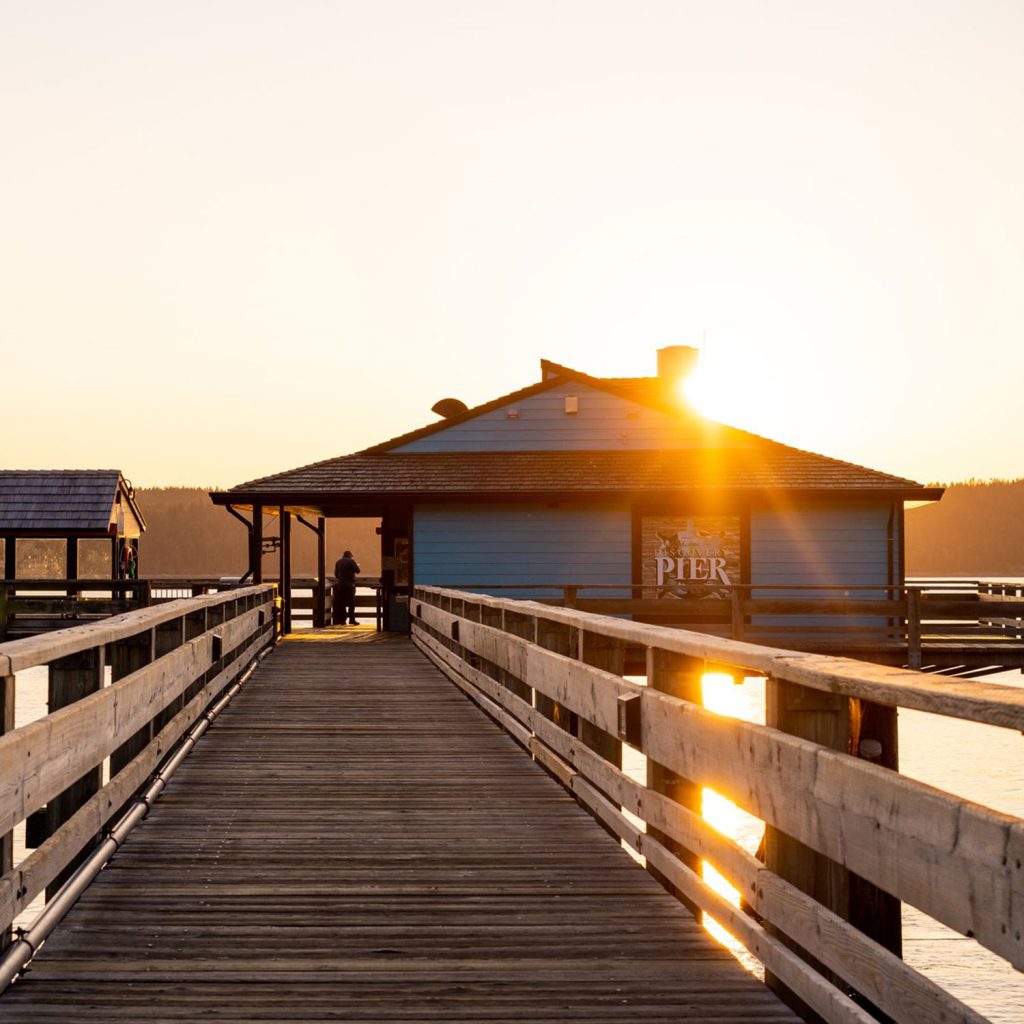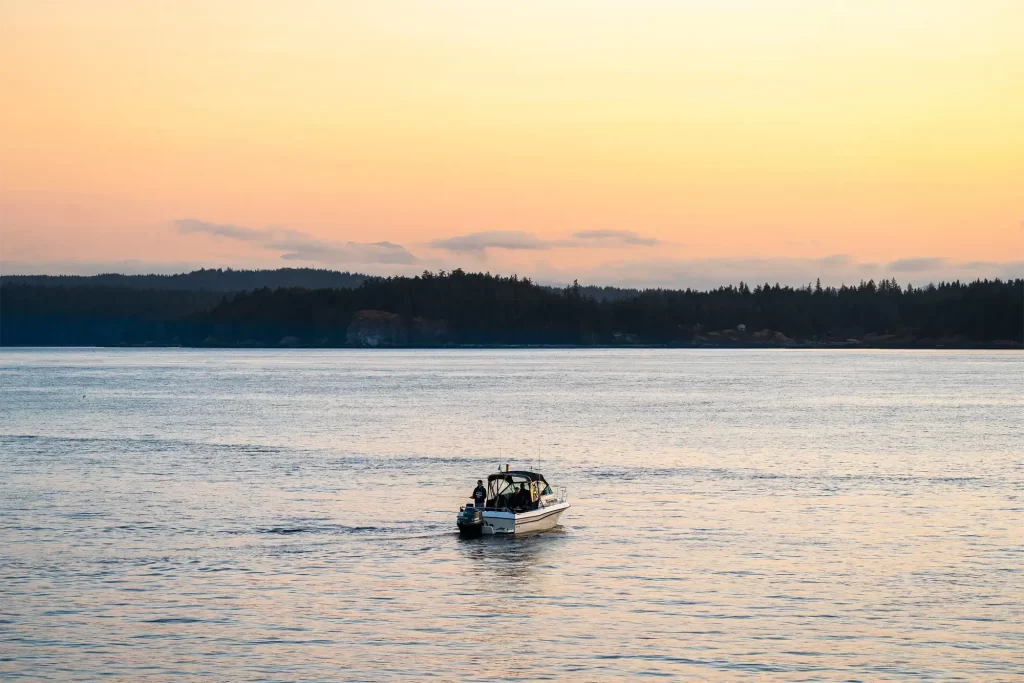Salmon have been bringing people to the Campbell River estuary for literally thousands of years. We have not been dubbed the “salmon capital of the world” for nothing.
Fishing for sport got its start in Campbell River in the 1890s when news got out to the international sportfishing community about the massive Chinook salmon (Tyee), of up to 70lbs, pooling near the estuary in August every year. Well-heeled fishermen from all over the world began to flock to Campbell River for a chance to catch one of these giants. The world-famous Tyee Club was established later, in 1924, and has kept the momentum and enthusiasm for Tyee fishing in Campbell River going strong.

Guest Blogger: Beth Boyce from the Museum at Campbell River
Experience Tyee Fishing for Yourself With an Experienced Local Guide!
In the early days, visiting fishermen camped in canvas tents on the Spit next to the fishing grounds and were guided in the pools by local Laich-Kwil-Tach fishermen rowing cedar dugout canoes, their knowledge of the local waters making them indispensable to the visitors. In later years, the Painter rowboat gained in popularity and has since become an inextricable part of the history and culture of Tyee fishing in Campbell River.
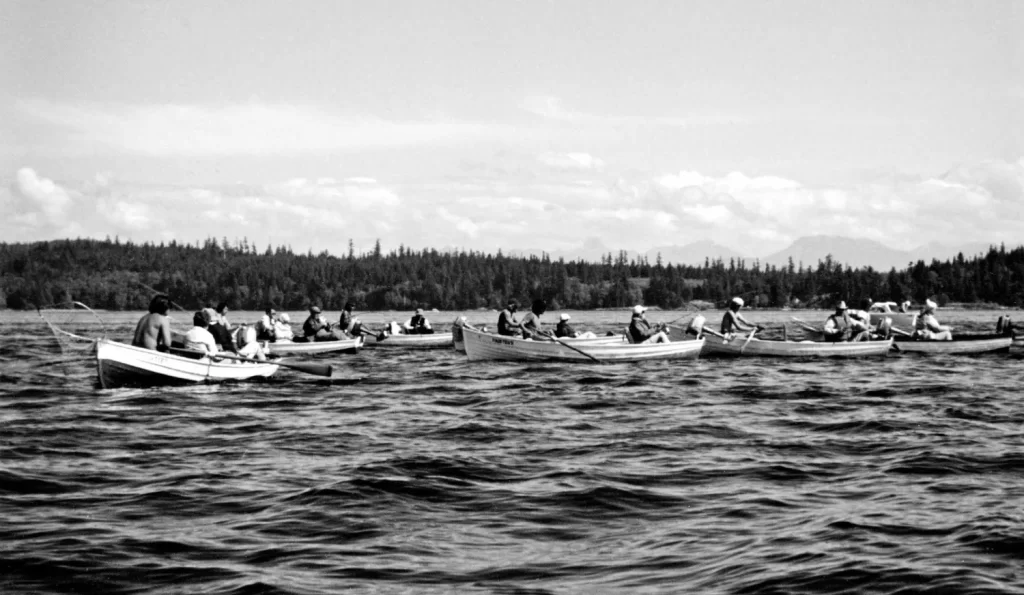
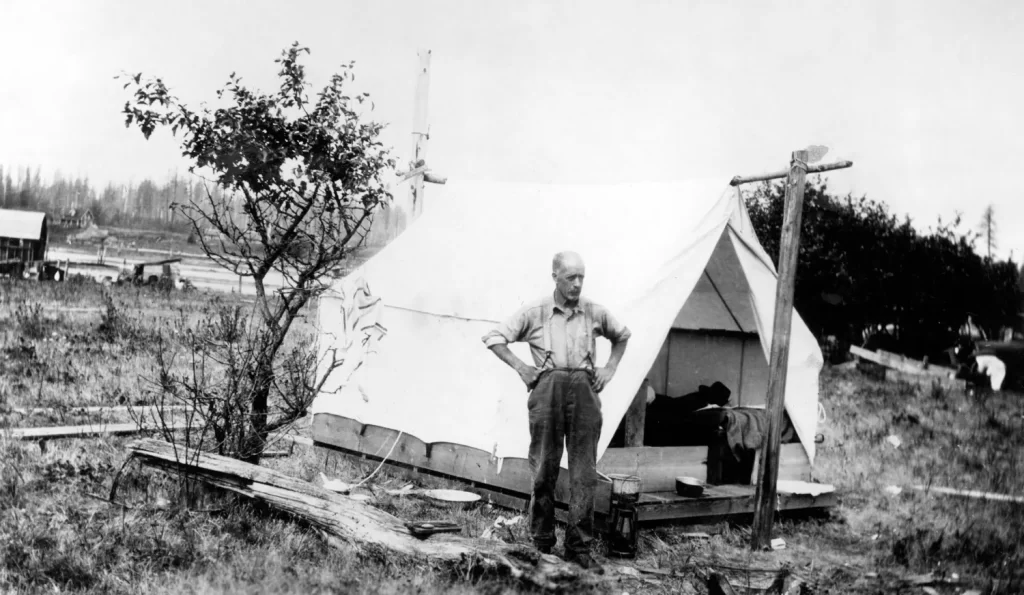
Painter was a skilled boat builder. In 1923 he established a boat building shop on the Spit. Over the winter, he would make up to fifty rowboats. They were rented out in the summer season for $3 per day, $8 more if the fisherman (or woman) needed a guide to go with it. At the end of each season, Painter would sell the boats and make a new fleet. His peak boat building years were 1923-1934, during which time he had a team, usually fishing guides, helping him to assemble the boats.
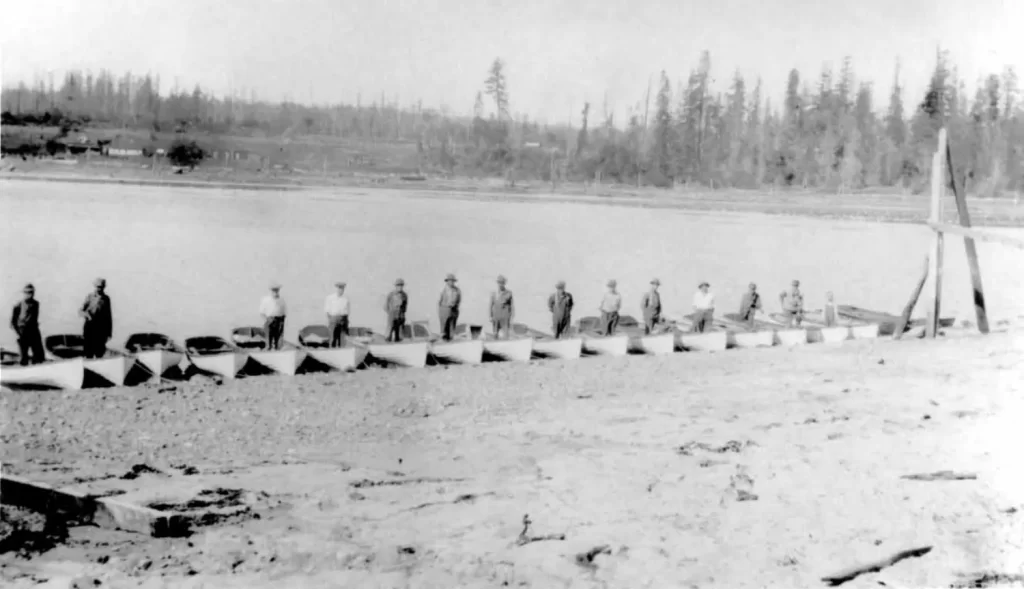

Painter designed the rowboats specifically for fishing in the waters around the Campbell River. The most common size he made was a 14’ length, but both 12’ and 10’ boats were made as well. The 1 1/8” cedar boards had been split on a band saw and shaped in pairs, one for each side of the boat. The rounded sides of the rowboat were lower in the centre to reduce windage. Although some have suggested this modification was to make pulling in the large Tyees easier, Joe Painter, Ned’s son, insists, “When you have a fish up to the boat, the adrenaline is going and pulling a fish aboard isn’t a problem.”
At first, the boats were double-ended, but with the development of outboard motors, Painter changed the design to include a stern transom to accommodate a motor. If fishing by Tyee Club rules, the motor can only be used to get to the fishing grounds. The boat has to be rowed once in the pools.
In 1926 the Painters established a tent camp beside their house on the Spit to host the visiting fishermen. In 1939, they moved across to the north bank of the Campbell River and established Painter’s Lodge. It soon became the place of choice for sport fishermen to stay. As the business grew, Painter had less time for building boats, only making seven or eight per year.
Painter retired from boat building in 1954, but the Painter rowboat lives on. A fibreglass mould was made from an original Painter rowboat. Even now, if you go down to the Campbell River Spit on an early morning or late evening in August, there are dozens of Painter rowboats being paddled back and forth, their occupants patiently casting with hopes of landing a thirty-pound (or more) Tyee and joining the world-famous Tyee Club.


